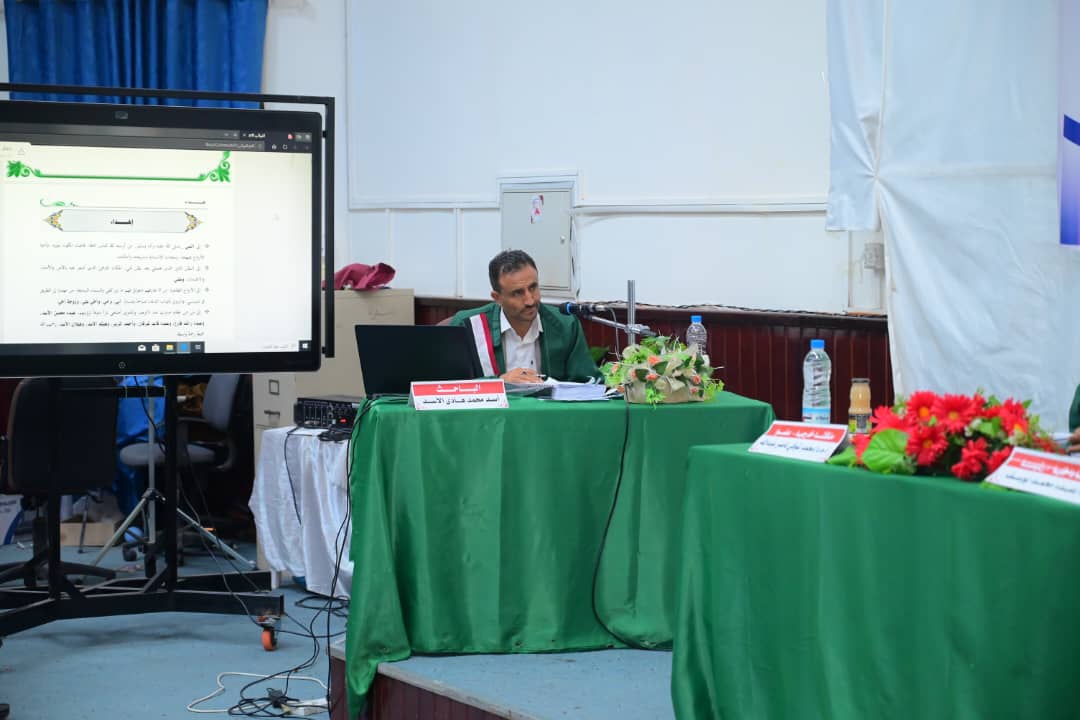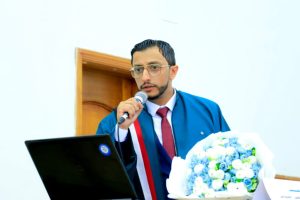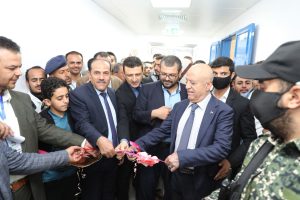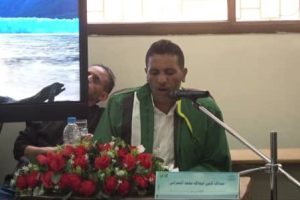Public MA Viva-Voice Examination of Mr. Asad Mohammed Hadi Alasad

The Public Viva-Voice Examination for the MA Thesis hereto entitled: ” The Rulings Verses in Tafsir of Al-Mawza’i (d. 825 AH) and Al-Thala’i (d. 832 AH), from the Beginning of Surat Yunus to the End of Surat Al-Noor and Their Applications in the Contemporary Reality, a Comparative Study “, submitted by Mr. Asad Mohammed Hadi Alasad Department of Holy Quran and Its Sciences, Faculty of Education –Sana’a, Sana’a University, was held on Sunday, 27/03/1446 Hijri corresponding to 1/9/2024. The Viva-Voce Committee, which was formed based on a resolution issued by the Post-Graduate Studies and Scientific Research Council, consisted of the following:
| No. | Committee Members | Designation | University | Position |
| 1 | Assoc. Prof. Mohammed Shawqi Nasser | External Examiner | Member | |
| 2 | Prof. Abdu Mohammed Yosif | Internal examiner | Sana’a University | Chair |
| 3 | Prof. Refaat Abbora | Main Supervisor | Sana’a University | Member |
The study aimed at introducing
- the interpreters (Immam Muzai and the jurist Althulathi), and their methods in presenting rulings.
- Showing their approaches, similarities and differences that are limited in this research, and the applications of the rulings verses that are included in the research in the contemporary Reality.
The study concluded a set of findings as: First: the similarity of the methods of presentation followed by the two interpretors in their interpretations beginning with a comprehensive introduction to the foundations of interpretation, the sciences of Holy Qur’an and the Arabic language in which they discuss the verses of the judiciary and interpreting them according to the Qur’anic sequence. They started firstly with mentioning the reasons for the revelation, then explaining the strange words, followed by deducing the jurisprudential rulings. They divide the verses that include several rulings into the form of issues, as Imam al-Mawzi calls them, or sentences of rulings, or the results of the verse, rulings, as the Al-Thala’i call them, or the results of this sentence as rulings. Second: the two approaches of the two commentators are similar in the following: being fair and not intolerant. Paying attention to the fundamental aspect, and adopting it in reasoning and weighting. Adopting interpretation based on Alhadith. Interpretation is based on the praiseworthy opinion that the Arabic language and the context of the Holy Qur’an bear witness to. Relying on language to derive judgments and direct meaning. Chastity of the tongue, and discussing the violator in a scientific way. Third: the two commentators differed in some matters, including: doctrine and belief. Imam Al-Mawzi limited himself to extracting the verses of rulings from twenty-eight surahs, while the jurist Al-Thala’i expanded in extracting the verses of the rulings until his interpretation included more than one hundred surahs. The jurist Al-Thala’i stated many of the sources and references from which he quoted, while Imam Al-Muza’i only stated a few of the sources and references from which he quoted from. . Fourth: The study of the verses of rulings included (52) fifty-two issues (which are the ones in which Imam al-Muwazi’ has a speech, a choice, a preference, a deduction, or a mention of the scholars’ sayings on the issue without giving preference or choosing one of the sayings, from the beginning of Surat Yunus to the end Surat Al-Nour), Imam Al-Mawzi agreed with the jurist Al-Thala’i on (17), seventeen issues, and disagreed with him in (11), eleven issues, and he was unique in (7), seven issues, and seventeen issues were mentioned by Imam Al-Mawzi and the jurist Al-Thala’i, but he did not explain their opinion towards these issues. Imam Al-Muza’i agreed with Shafi’is in (31), thirty-one issues, and disagreed with them in (2), two issues, and differed from the Shafi’i doctrine in (3), three issues. The jurist Al-Tala’i agreed with the Zaidiyyah in (33), thirty-three issues, and he distinguished himself from the Shafi’i doctrine in (3), three issues. About the Zaidi doctrine in (3), three issues, and the Zaidi doctrine is unique in (7), seven issues.
Many recommendations were suggested as: 1- Completing this project on all surahs of the Holy Qur’an, as the topic is important in which it links between comparative interpretation and jurisprudential interpretation. 2- It should be included in the items of the introductory year for postgraduate studies in the field of interpretation (Tafsir) and Qur’anic sciences.
A number of academics, the department head, some researchers, students, interested people, and a number of the candidates’ colleagues and family members attended the viva.
The MA Thesis has been examined and is recommended by the Viva-Voice Committee for acceptance and approval. The Candidate was recommended to be awarded the degree of Master in Holy Quran and Its Sciences majoring in Tafsir (Interpretation),, with an overall grade of Excellent. Translated by: Prof. Fazee Almuslimi
https://www.youtube.com/watch?v=F3V2dAsoK3Q






